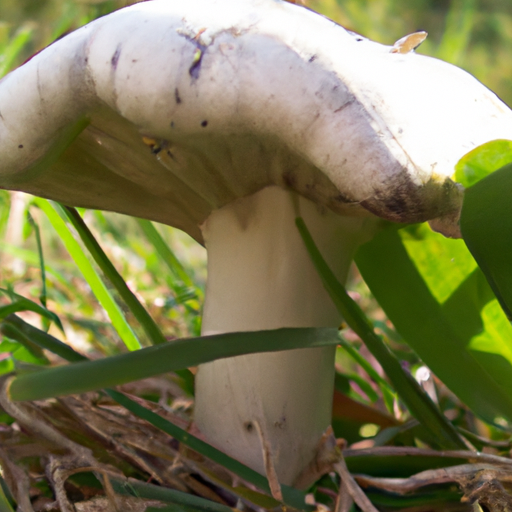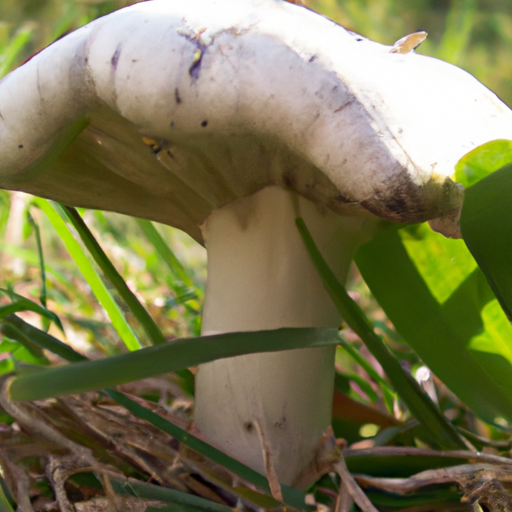In the vast world of fungi, it’s easy to get lost in the various species and their classifications. One particular question that often arises is: what is the difference between mushrooms and toadstools? While these two terms are often used interchangeably, there are distinct features that set them apart. Understanding these differences can help shed light on the fascinating world of mushrooms and toadstools, and perhaps even inspire a closer look at these unique organisms.

Overview of Mushrooms and Toadstools
Mushrooms and toadstools are both types of fungi, and despite the similar general appearance, there are some important differences between them. Both mushrooms and toadstools belong to the phylum Basidiomycota, which is characterized by their reproductive structures called basidiocarps. These basidiocarps, commonly referred to as the “fruiting bodies,” are what we commonly identify as mushrooms or toadstools. However, the terms “mushroom” and “toadstool” are not used in a strict scientific sense, but rather as more colloquial terms.
Taxonomy and Classification
In terms of taxonomy and classification, mushrooms and toadstools are both classified under the phylum Basidiomycota, which consists of numerous classes, orders, families, and species. In general, they share many characteristics, such as having gills under their caps, producing spores for reproduction, and having a symbiotic relationship with trees and plants. However, it is crucial to note that the classification of fungi is constantly evolving, and as more research is conducted, our understanding of their taxonomy continues to develop.
Physical Appearance
When it comes to their physical appearance, mushrooms and toadstools can look quite similar at a glance. Both typically have a cap or pileus, which can vary in color, shape, and size. The cap is often attached to the stem or stipe, which provides support and stability to the structure. Beneath the cap of both mushrooms and toadstools, there are gills, which are thin, radiating structures that house the spores. However, it is important to note that while gills are common in many mushrooms, toadstools can have pores, spines, or even a smooth surface instead of gills.
Toxicity and Edibility
One of the primary differences between mushrooms and toadstools lies in their toxicity and edibility. Mushrooms are generally considered safe to eat and are widely appreciated for their unique flavors and nutritional benefits. Many species of mushrooms are cultivated for culinary purposes and form an essential part of various cuisines worldwide. On the other hand, toadstools are often classified as toxic or poisonous. They can contain harmful toxins that can cause a range of adverse effects when ingested, including nausea, gastrointestinal distress, and in severe cases, even organ failure. Therefore, it is crucial to have proper knowledge and expertise in mushroom identification before consumption.
Habitat and Distribution
Mushrooms and toadstools can be found in a wide range of habitats and environments across the globe. They are incredibly adaptable organisms and can grow in various conditions. They are commonly found in forests, woodlands, meadows, and even in urban areas. Some species of mushrooms and toadstools have specific environmental requirements, such as growing in symbiotic relationships with certain trees. They can also appear during specific seasons, with some species being more prevalent in autumn, while others thrive in spring or summer.
Life Cycle and Reproduction
The life cycle and reproduction of mushrooms and toadstools follow a similar pattern. They begin as spores, which are tiny reproductive cells released from the basidia, the reproductive structures found on the gills, pores, or surfaces of their fruiting bodies. These spores are then dispersed through various means, such as wind or animal interactions. If conditions are favorable, the spores germinate and form thread-like structures called mycelium. The mycelium serves as the underground network of the fungus, extracting nutrients from the surrounding environment. When conditions are right, the mycelium develops into the familiar fruiting bodies, which are the mushrooms or toadstools visible above the ground.

Ecological Importance
Mushrooms and toadstools play a vital role in the ecosystem. They are decomposers, breaking down organic matter and recycling nutrients back into the environment. Their mycelial networks also contribute to soil health by improving its structure and fertility. Additionally, mushrooms and toadstools form crucial symbiotic relationships with trees and plants, providing them with vital nutrients and aiding in their growth. In certain ecosystems, they serve as indicators of environmental health and can help researchers assess the overall well-being of an area.
Cultural Significance
Throughout history and across different cultures, mushrooms and toadstools have held various cultural significances. They have been used in religious ceremonies, artistic representations, and traditional folklore. In some cultures, mushrooms are associated with good luck, while in others, they are considered mysterious or even magical. Mushrooms and toadstools have also found their place in literature, with notable appearances in fairy tales and fantasy stories, captivating readers’ imaginations.
Historical Usage and Folklore
Mushrooms and toadstools have been used for various purposes throughout history. Ancient civilizations, such as the Egyptians and Aztecs, recognized their medicinal properties and used them in traditional medicine to treat various ailments. They were often seen as symbols of longevity and vitality. In folklore, toadstools have often been portrayed as poisonous or even linked to supernatural beings. This perception likely arose from the fact that many toadstools are toxic and can have hallucinogenic effects if consumed.
Medical and Pharmacological Applications
In recent times, mushrooms have gained attention for their potential medical and pharmacological applications. Certain species, such as the reishi mushroom, have been extensively studied for their antioxidant and immunomodulating properties. Other mushrooms, like the shiitake or lion’s mane, have shown promise in promoting brain health and cognitive function. Additionally, compounds extracted from certain mushrooms have been used in the development of novel pharmaceutical drugs. However, it is essential to approach the use of mushrooms for medicinal purposes with caution and under professional guidance.
In conclusion, mushrooms and toadstools are fascinating organisms that share many similarities but also have distinct differences. Understanding their physical characteristics, toxicity, and ecological roles is crucial for those interested in foraging or studying these incredible fungi. Remember, it is always best to consult with experts and exercise caution when dealing with mushrooms and toadstools to ensure personal safety and enjoyment of these remarkable organisms.



No Responses